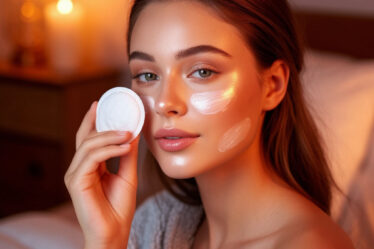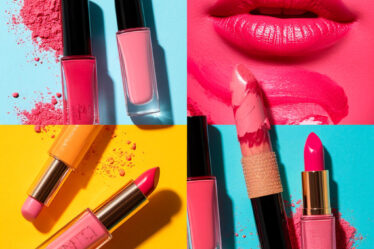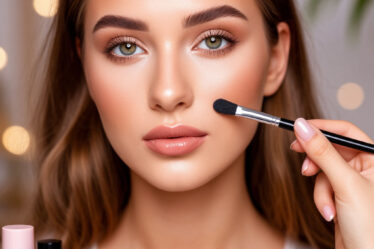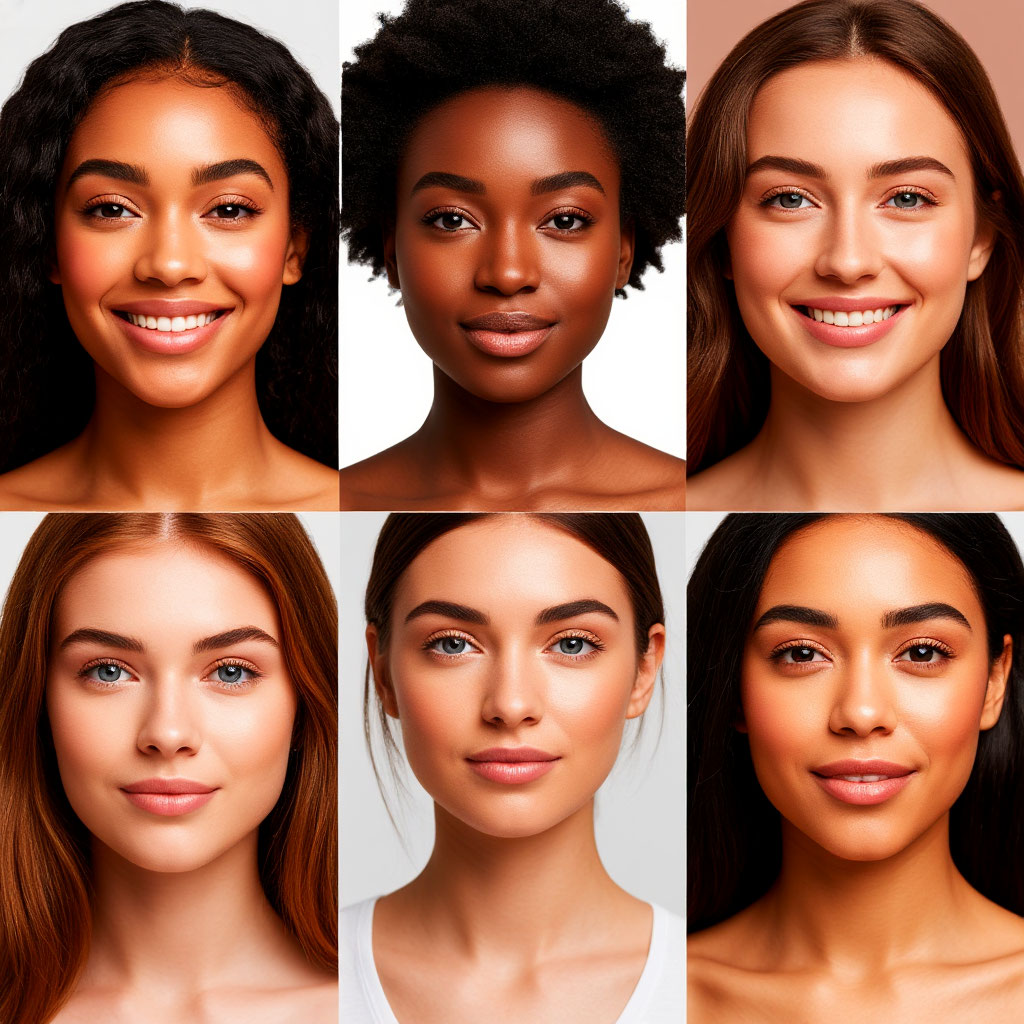
Everyone wants to look stylish and harmonious, but not everyone understands why some colors make the image bright, and others – faded. How to determine the color type is a question that concerns not only stylists, but also those who want to learn how to choose the perfect shades for themselves. Having understood the subtleties of your appearance, you can forget about unsuccessful purchases and makeup that “does not suit you”.
The analysis of appearance is not a complex science, but a fascinating process of self-discovery. It is enough to understand what tones prevail in the skin, hair and eyes to reveal the secret of the perfect palette. Cool and warm undertones, contrast, natural brightness-these details help you find “your” colors and avoid mistakes in style. It’s time to figure out once and for all which shades make your face look fresh, and which add extra years.
Picking colours that flatter you gets easier once you know your undertone and whether you lean light/deep and soft/clear. Our Beauty Club mini-brochure walks you through quick at-home tests and gives starter palettes. You’ll find a printable PDF at the end of this article.
What affects the color type
How to determine the color type and why it is important
Choosing the perfect shades in clothing and makeup begins with an analysis of appearance. The color type is not just a fashionable term, but the key to a harmonious image. It depends on natural data:
- skin tones;
- hair color;
- eye colors.
Understanding these features helps you avoid mistakes in choosing a palette and emphasize your natural beauty.
Main criteria: skin and hair
How do I determine the color type correctly? The basis is the skin tone. It can be warm, cold, or neutral. Warm skin tones have a golden or peach undertone, while cold ones have a pink or bluish undertone. The neutral look combines both options, which complicates the analysis of appearance, but makes the palette versatile.
Hair color also plays an important role. Light brown, chestnut and copper shades are more likely to indicate a warm type, while ash, platinum and blue-black — cold. But the natural tone is not always obvious: for example, dyed hair can distort perception.
The role of contrast in appearance
Brightness and contrast between the skin, hair, and eyes help you understand how to determine the color type more accurately. High contrast (for example, light skin and dark hair) is typical for the winter or summer type, while soft transitions are typical for the spring or autumn type.
Why Color temperature Matters
Warm or cold type affects the choice of shades in the wardrobe and cosmetics. Warm exterior colors are golden, terracotta, and olive, while cool exterior colors are emerald, fuchsia, and icy pastels. Incorrect palette selection can make your face look tired or create disharmony in the image.
How to avoid common mistakes
Beginners often confuse brightness with color temperature. For example, a rich red can be either warm or cold — it is important to look at the undertone. Another problem is testing under artificial light, which distorts the perception of shades.
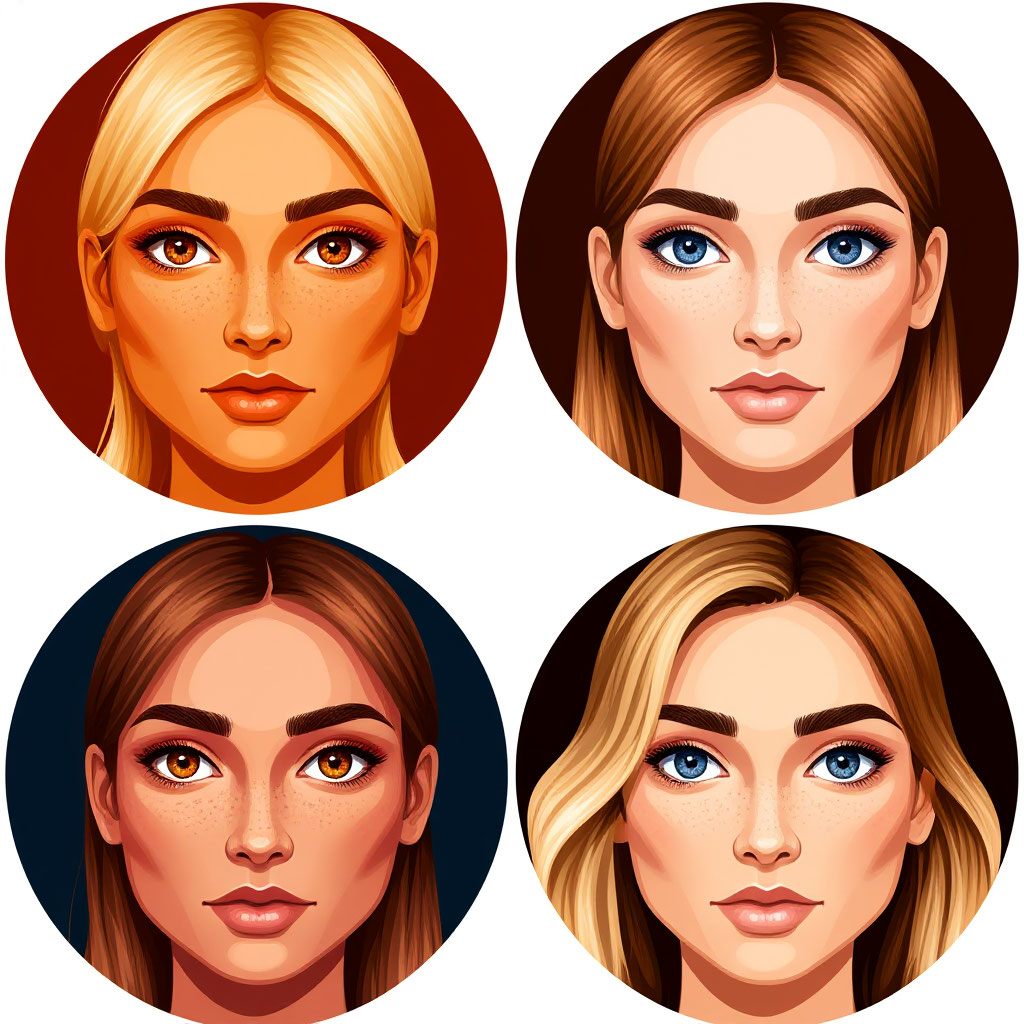
Cold and warm shades: how to distinguish and define your own type
When determining the color type, the key role is played by dividing shades into warm and cold. This is the basis without which further analysis of appearance is meaningless. It’s easy to make a mistake: for example, a rich orange may seem uniquely warm, but its composition sometimes hides cold notes. How to figure it out?
Test for warm or cold type: simple ways
The most obvious method is to compare gold and silver. If your skin looks fresher and smoother in silver jewelry, you probably have a cold undertone. If gold gives radiance-warm. Another life hack: take a closer look at the veins on your wrist. Bluish streaks indicate a cold type, greenish veins indicate a warm type.
How the color palette affects the perception of the face
Warm shades (peach, mustard, golden) are in harmony with the appearance, where there are notes:
- honey,
- reddish,
- copper ones.
Cool colors (ruby, emerald, ice pink) emphasize the natural freshness of the owners of pinkish skin and ashy hair. Incorrect selection of the palette can create a tired effect — for example, cold blue on a warm color type visually adds blue under the eyes.
Confusing nuances
Neutral types are the most difficult to diagnose — their skin combines both pink and golden undertones. In this case, you should focus on the reaction of the face to bright colors: if both fuchsia and terracotta look equally good, you probably have mixed characteristics. It is also important to remember that tanning or coloring your hair temporarily changes perception, but not the color type itself.
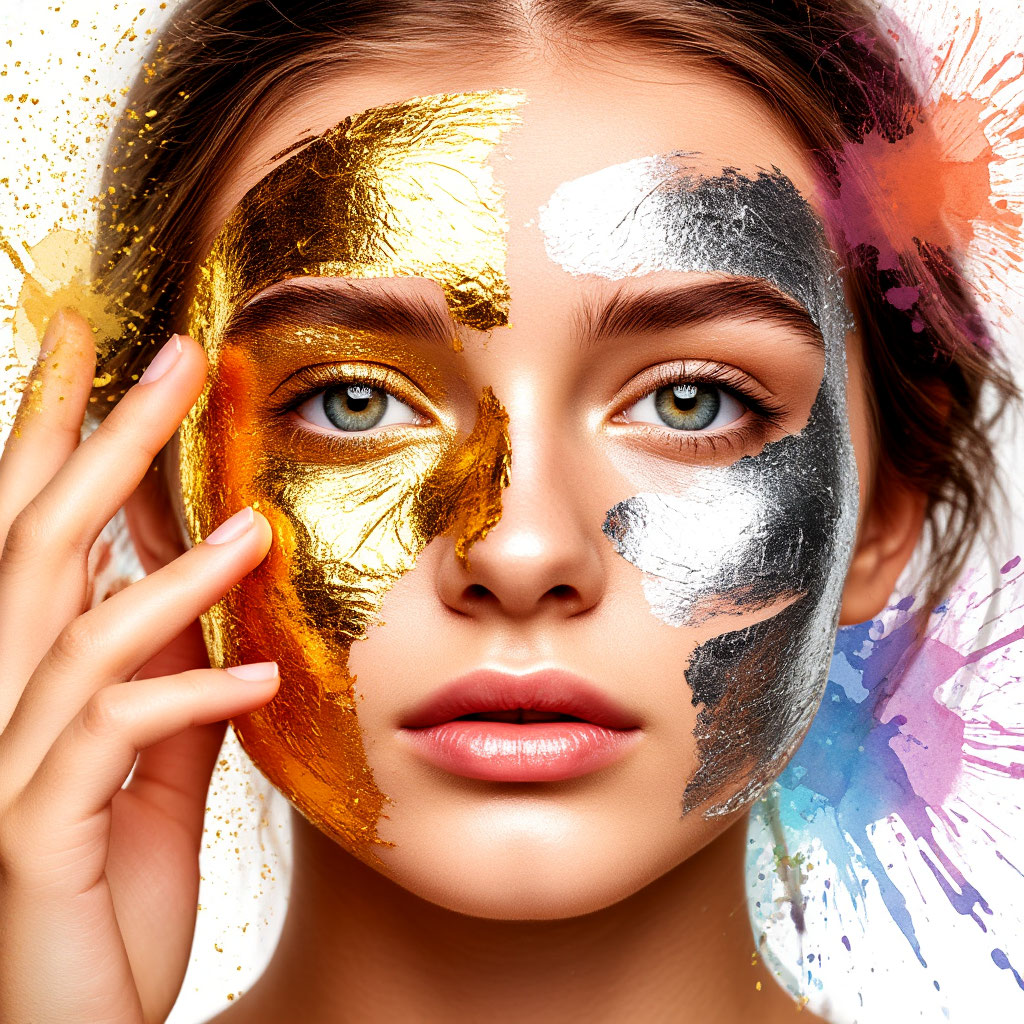
Test with foil and fabrics: accurate determination of the color type
Theory is the foundation, but the real answer to the question of how to determine the color type is given only by practical tests. Even the most thorough analysis of appearance from photos can be wrong, because screens distort colors. Live experiments with fabrics and metals reveal the truth about what shades really harmonize with skin and hair.
Foil — the secret tool of stylists
Professionals have long used this method to identify the warm or cold type. You will only need a matte gold and silver foil (gloss creates glare). In natural light, bring the metals to your face one at a time. Silver enhances the freshness of the cold type, gold — the radiance of the warm type. If the difference is not obvious, you may have a neutral undertone — a rare and universal case.
Fabric Test: Color magic
For this stage, you need two bright pieces of fabric: one in a cool shade (for example, emerald), the other in a warm shade (terracotta). Apply them to your face and watch:
- Cool tones will make warm skin yellowish, and “your” – smooth and radiant.
- Warm shades will soften the cold type, but they will add life to spring and autumn color types.
The main thing is to monitor the reaction of the skin around the eyes and lips: this is where disharmony is immediately noticeable.
Reliability of methods: what experts say
Both tests-with foil and fabrics-are considered the most accurate for selecting the palette. Their reliability is confirmed by the fact that they evaluate the direct reaction of the skin and hair to color, bypassing subjective factors. For the purity of the results, it is important to:
- Perform tests under identical lighting conditions
- Use materials with the same texture and saturation
- Take into account the natural skin tone without sunburn or redness
Conflicting results are rare and usually indicate a neutral color type that combines the warm and cold types.
What to do after the test
Results are the key to personalized palette selection. For example, a confirmed cool type can safely invest in sea-green clothing, matte pink, and silver accessories. Mustard, brick and golden textures are suitable for warm ones.
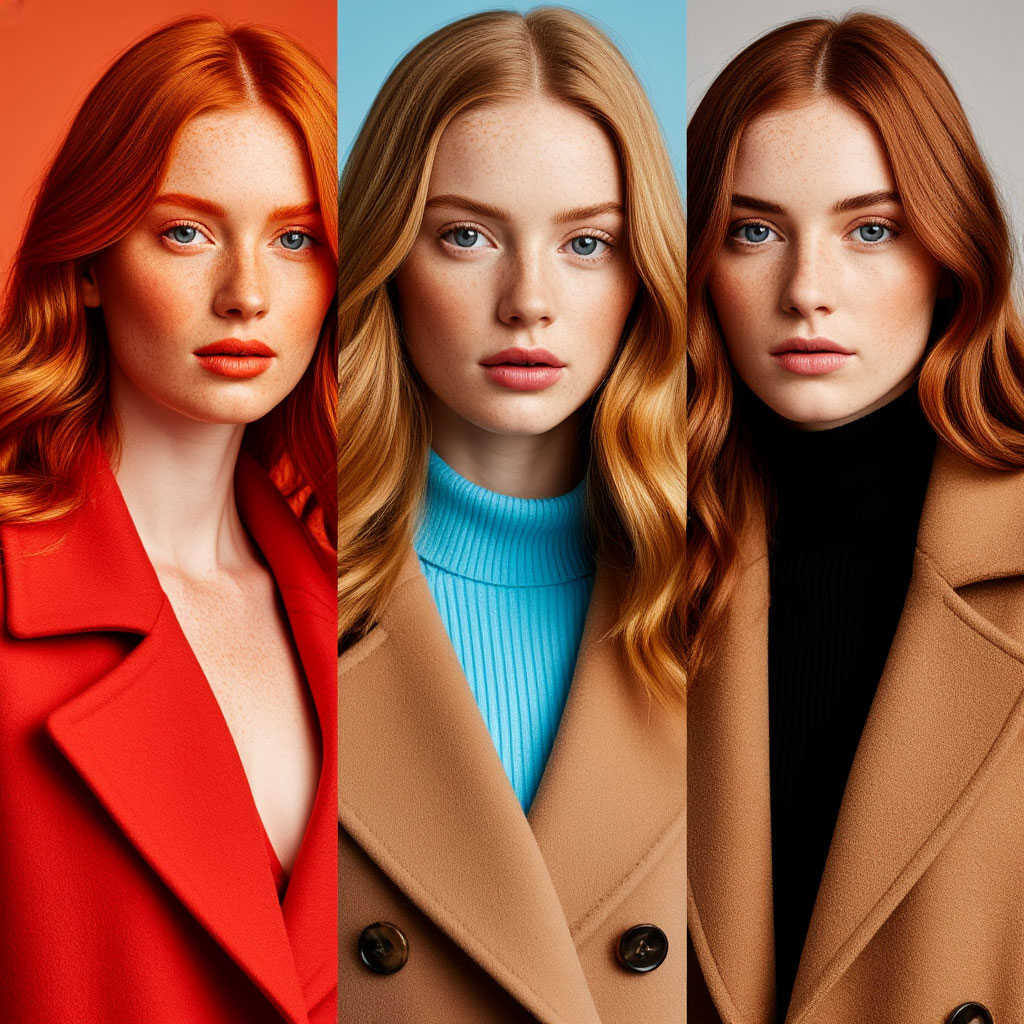
Influence of eye and hair color on color type determination
When deciding how to determine the color type, many people focus only on the skin tone, forgetting that the eyes and hair play an equally important role. They create an overall contrast of appearance and help you more accurately identify the appropriate color palette. For example, cold ash-colored hair combined with warm brown eyes can indicate a mixed type, which requires a special approach to the selection of the palette.
How eye color affects the color type
Eyes are not just a part of the image, but an important marker in the analysis of appearance. Cold color types (summer, winter) usually have eyes with gray, blue or rich brown shades, often with a clear contour of the iris. Warm types (spring, autumn) often have eyes with golden flecks, honey or nutty iridescences.
But there are nuances here. For example, green eyes can belong to both warm and cold types-it all depends on the undertone. If there are yellow or golden highlights in green, this is a sign of a warm color type. If the shade is closer to emerald or turquoise — cold.
The role of hair in determining the color type
Natural hair color is one of the key factors. Warm color types (spring, autumn) usually have hair with red, copper or golden iridescences. Cold ones (summer, winter) are distinguished by ashy, platinum or blue-black shades.
However, it is important to consider not only the color, but also the level of contrast with the skin. For example, dark brown hair on a light skin background creates a high contrast characteristic of the winter type, even if the shade of hair itself seems warm.
Complex cases: when the color of hair and eyes contradict each other
Often there are combinations that make it difficult to determine the color type. For example, cold ash-colored hair with warm brown eyes or warm golden curls with gray-blue eyes. In such cases, you should focus on the reaction of the skin to different shades — it will be the main indicator.
Knowing how the color of your eyes and hair affects your overall color type helps you choose your clothes and makeup more accurately. For example, owners of cold eyes and hair should avoid warm red and orange tones in their makeup-they can create an imbalance. For those who have warm eyes but cold hair, it is best to choose neutral shades that do not conflict with any of the characteristics.
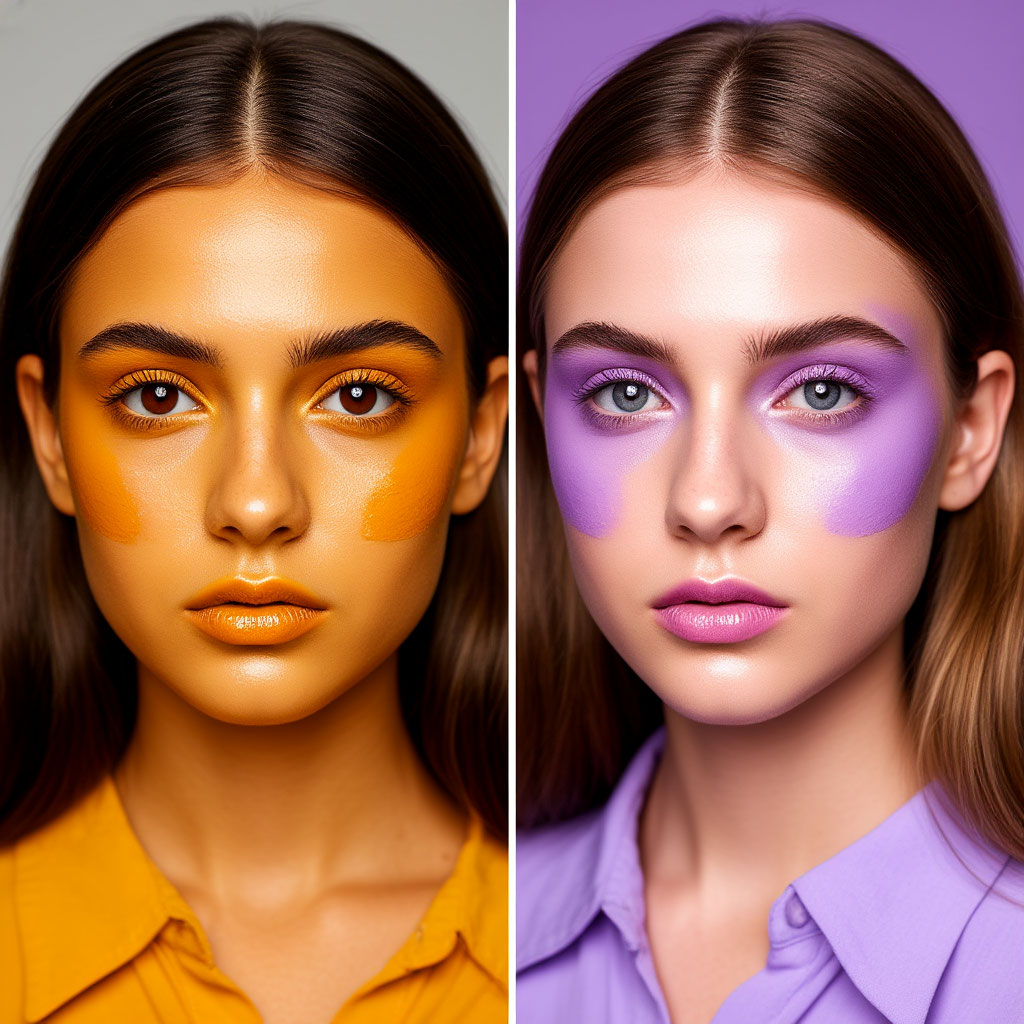
Common mistakes in determining the color type: how not to spoil the result
It would seem that how to determine the color type is a question that everyone will understand. But in practice, even those who have thoroughly analyzed their appearance face unexpected failures. Clothes that seemed perfect suddenly make your face look tired, and your favorite shade of lipstick for some reason ceases to please. What is the reason?
Mistake №1: Ignoring natural light
Check whether the warm or cold type prevails in appearance, you need only in daylight. Artificial lamps turn yellow or blue shades, distorting perception. Especially insidious are LED lamps: they can give the skin a grayish undertone, which is not really there. The ideal setup is near a window on an overcast day, when the light is soft and diffused.
Mistake №2: Confusion between brightness and color temperature
A rich shade doesn’t mean warm, and a muted shade doesn’t necessarily mean cold. For example, bright fuchsia belongs to the cold range, and delicate peach — to the warm one. When choosing a palette, it is important to separate saturation from sub-tone. Verification is simple: compare the shade with pure yellow or blue — is it drawn to the first one? So it’s warm.
Mistake №3: Changes in appearance are not taken into account
Sunburn, gray hair, hair coloring-all this temporarily changes the skin and hair, but not the color type itself. Many people, having repainted themselves in platinum blonde, decide that they have become “cold”, although their natural skin tone remains warm. The result is disharmony in the image. If in doubt, remember your natural appearance as a teenager: this is a reference for determining the type.
Error №4: Testing in an inappropriate state
Red eyes after a sleepless night, skin inflammation, or even a mild cold affect color perception. The face may appear paler or redder than usual, confusing. For the purity of the experiment, conduct tests when you are healthy and rested.
Error №5: Getting hung up on a single parameter
Some people think that it is enough to find out whether their skin type is warm or cold, and you can close the question. But the color type is a combination of all factors: skin, hair, eyes, contrast. For example, with warm skin, but cold eyes and hair, the palette will be mixed. Ignoring this leads to incorrect selection of the palette.
Check each parameter several times under different conditions. If you still have doubts after the tests, try to wear a neutral gray (it does not have a temperature) and evaluate which accessories are suitable for it — gold or silver. This will give you an additional hint.
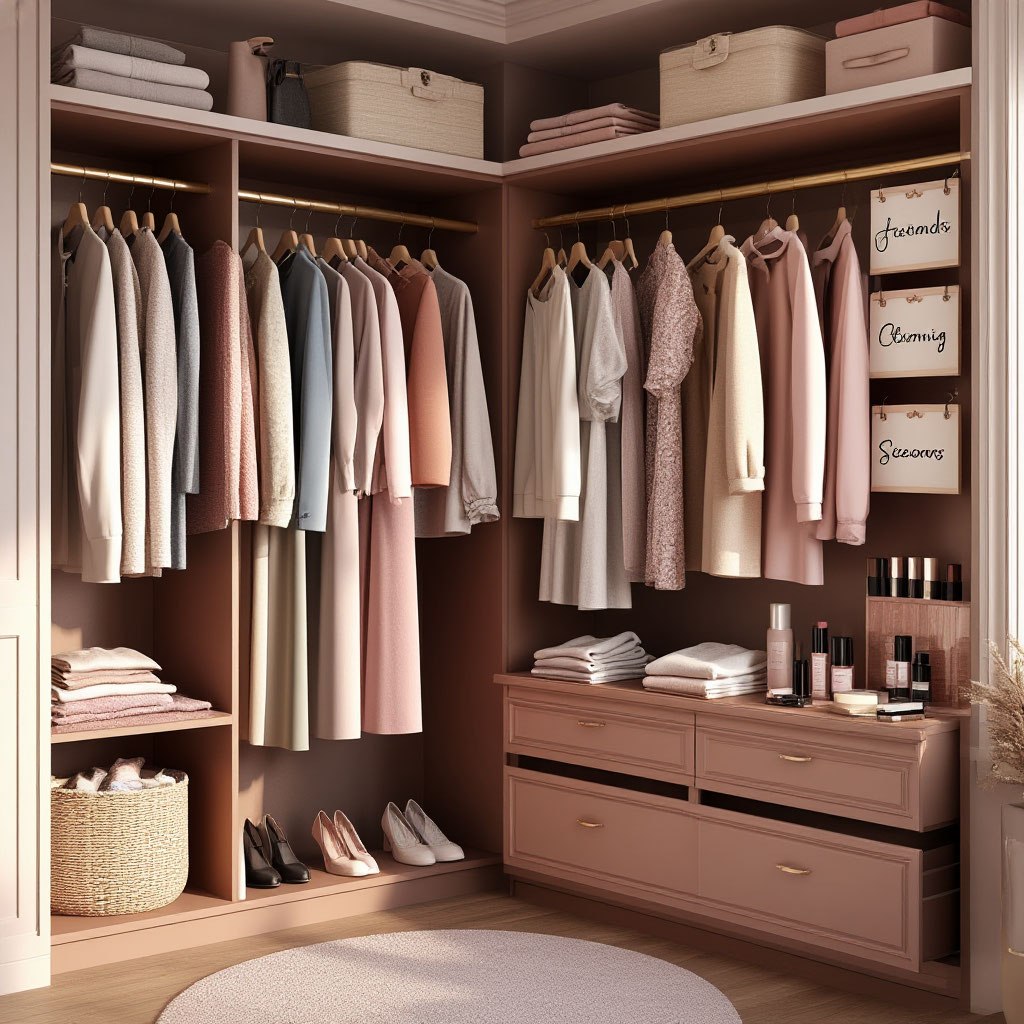
How to use the result: turning theory into stylish images
Now that it’s clear how to determine the color type, it’s time for the most interesting thing-applying this knowledge in real life. After all, all the analysis of appearance loses its meaning if you do not use the result to create harmonious images.
First steps in a new color reality
Owners of the cold type should pay attention to the precious shades: emerald, sapphire, ruby. These colors will emphasize the natural freshness of the skin and hair, make the look expressive. Earthy tones are ideal for the warm type: terracotta, mustard, olive — they will add radiance to the face.
The magic of accents: how to combine colors in an image
Even knowing your warm or cold type, many people are afraid to experiment. The secret is in the balance:
- 30% – accent colors from their own palette.
- 70% — basic neutral shades (beige, gray, white);
For example, for a cold summer type, you can add a lavender scarf to a gray coat, and for a warm autumn type, you can add a copper belt to a cream dress.
Makeup that works for you
Choosing a palette for cosmetics is the next important step. Cool types should choose pink, berry and silver shades in their makeup. Warm tones – peach, golden, and bronze. Main rule: the tone of lipstick or blush should be in harmony with the skin tone, and not contradict it.
Clothes: how to avoid errors in the store
Before buying a new item, you should ask two questions: whether this color belongs to my palette and whether it is combined with what is already in the wardrobe. A simple life hack: take a sample of your favorite shade of fabric (such as a scarf) and attach potential purchases to it.
Seasonal changes: adapting the color type
A summer tan or winter pallor can slightly change the perception of colors. You can add more saturated shades to the warm type in the cold season, and muted pastels to the cold type. But the basic palette remains unchanged.
When you can break the rules
Knowing your color type, you can sometimes allow yourself to experiment. For example, if the cold type really wants to wear a warm orange, you should choose a muted version (for example, pumpkin) and combine it with neutral tones.
Determining the color type is not just a fashion trend, but a real key to discovering your natural beauty. When you have figured out how to determine the color type, and conducted a thorough analysis of the appearance, you open up limitless possibilities for creating harmonious images. No more random purchases that hang in the closet with tags for years, and no more makeup that makes your face look tired. Only colors that work for you, highlighting the best features of your skin and hair.
It doesn’t matter whether you’re warm or cold-toned — the main thing is that now you know the art of choosing a palette. This knowledge will stay with you forever, saving you time, money and nerves when creating the perfect image. Remember: fashion is changeable, and your color type is a constant value, your personal compass in the world of style. It remains only to apply this knowledge in practice and enjoy the result!
Check undertone in daylight, choose a direction (Light/Deep/Warm/Cool/Soft/Clear), and build a small palette you’ll actually wear.
Download the brochure (PDF): Beauty Club — Color Type: Step-by-Step

